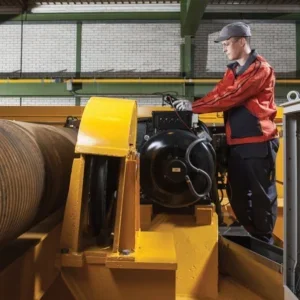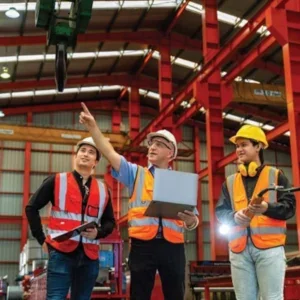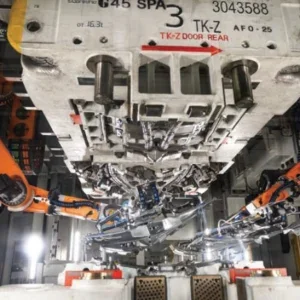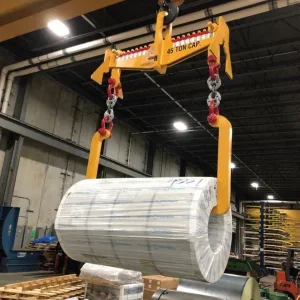The crane is currently mounted 45m up the tower but it is already equipped with 50m of hoisting rope as the frame can be extended a further 5m, if required.

Meloni has already supplied an overhead crane for the facility, previously for the Vega project. Both orders were received from Oerlikon Contraves, now Rheinmetall Italia, an air defence and radar technology firm.
The crane was built in Meloni’s main factory in Tolentino and then transferred to a nearby secondary workshop in Petriolo. It will be used for the installation of satellites into the Soyuz launcher. Load tests at the Petriolo facility were attended by the European Space Agency.

The first phase of the installation, which took two-and-a-half weeks, was completed in May. The completion of the electrical wiring, testing and commissioning will happen in September, after construction of the tower is complete.
Rockets will initially be lifted up by a hydraulic device, but they will at this stage be missing the final part, called the upper composite, which includes the point of the rocket, the last stage of the motor and the satellites. The upper composite weighs 16t.

The upper composite, lifted using a lifting beam, will be lifted and placed on one floor, where the installation of satellites and other activities are carried out. Once the upper composite is ready it is installed onto the rocket. “The full operation can take some days,” says Paolo Moretti, commercial department, Meloni Tecno-Handling. The auxiliary hoist will be used to handle other rocket components and accessories.
There is one set of push button controls, which are ATEX (explosive atmospheres) compliant. It can be connected by plugs to three operating points, one on the bridge and two on different floors of the tower.

Paolo Moretti adds: “The crane is designed to be FS/FS (fail safe/fail safe), which means that if a safety device does not work, and the second redundant emergency device does not work either, the crane can be operated safely regardless.”
Even to this point, Meloni says it has no specifications of the dimensions or lifting points on the rockets. It has worked from the beginning on technical specs including the required working area and lifting capacities. Rigging the loads to the lifting beam will be another major operation.
The hoist has three brakes; one service brake (self braking motor) and two emergency brakes on the drum, one redundant to the other.
The crane operators will be trained by Meloni Tecno-Handling, as they were for the Vega project at the same site.






